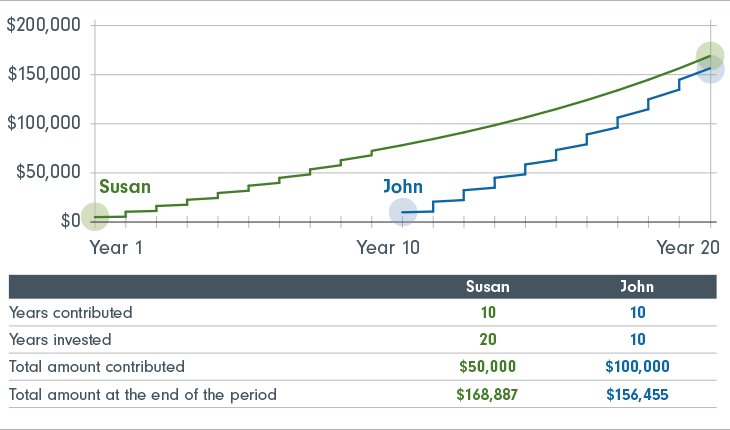How to compound your money over time: Invest early

Imagine how much more money you might have had in your bank account if you started investing earlier. The common perception is that if you don’t have much money to invest now, it’s better to contribute more later.
But in fact, one of the best ways to build wealth is to start investing early – even if it’s only a small amount. It’s hard to find the motivation to start investing when you’re young, which is why a lot of people put it off until they’re further along in their career.
Seeing is believing: let’s look at the difference in returns between two people who start investing at different times. Meet Susan and John; they both invested money, but started investing at different times.
Susan started investing 20 years ago. She made ten annual contributions of $5,000 and received an 8% annual return. She stopped investing after ten years, and held on to the investment for a further ten years, at an 8% annual return.
John, meanwhile, started investing ten years ago. He made ten annual contributions of $10,000 at an 8% annual return. He ended up with less money than Susan, even though he invested twice as much money, because he started later.

This example assumes an 8% annual return during the years invested. The rate of return shown is used to illustrate the effects of the compound growth rate and is not intended to reflect future values of the fund or returns on investment in any fund. Source: Fidelity Investments Canada ULC.
As the chart above shows, the sooner you invest, the more time your money has to grow and benefit from the power of compounding. Although they both contributed money to their investments for the same amount of time, and John put in more money per year, Susan ended up with more money. How? Susan was growing her investment by 8% annually for ten years before John started investing. Once John started investing, Susan stopped contributing to her investment, but her investment continued to grow at 8% annually for an additional ten years.

